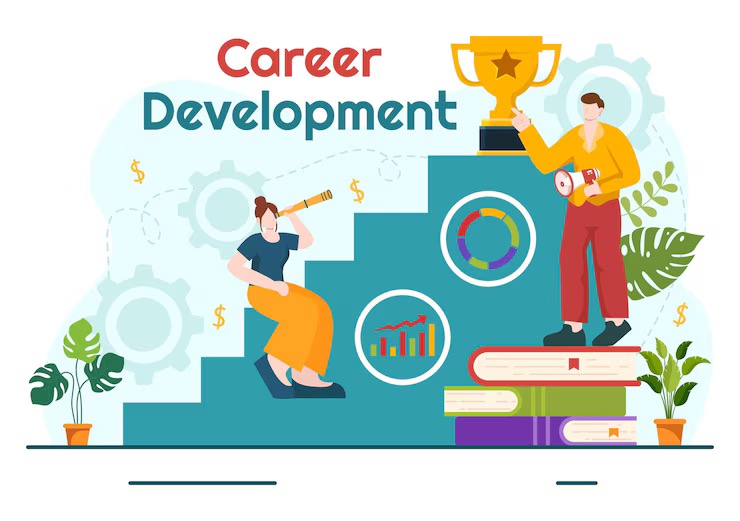Inspirational journeys
Follow the stories of academics and their research expeditions
Understanding the difference between reskilling, upskilling and new skilling

Understanding the difference between reskilling, upskilling and new skilling
Key Takeaways:
- Reskilling: Involves training for an entirely new set of skills to adapt to different roles within the company due to technological advances, promoting employee growth and retention.
- Upskilling: Enhances existing skills for additional responsibilities and higher-level roles, creating a continuous learning strategy and fostering industry-leading talent.
- New Skilling: Represents continuous learning to build high-demand skills, adapting to the changing needs of the workforce and staying relevant in the evolving world of work.
As technologies like artificial intelligence (AI), predictive analytics and blockchain become more commonplace, organizations are struggling to find candidates with the skills needed to keep up and evolve these new systems and platforms, leading to significant skill gaps. More than 80% of talent development professionals report a skills gap in their organization, and 78% anticipate a future skills gap.
But one-off reskilling or upskilling efforts simply aren’t enough. To ensure their workforce remains competitive and agile, organizations will need to constantly evaluate employees’ individual capabilities and the future skills needed for their business to thrive—setting the stage for continuous learning. To get a better understanding of how reskilling and upskilling fit within this broader “new skilling” strategy, let’s examine each.
What is Reskilling ?
Reskilling involves training employees on an entirely new set of skills to prepare them to take on a different role within the company. This typically occurs when workers’ previous tasks or responsibilities become irrelevant, often due to advances in technology.
“Businesses do this because an employee may fit well in a team and have marketplace or company knowledge that would be difficult to replace,” explains Parsch. “To keep that employee, the company just needs to update their skills to match new systems and new capabilities.” Reskilling may involve obtaining a new degree, certification or education in a different field or area of expertise. Reskilling is a crucial component of career development, enabling employees to transition into new roles and continue their professional growth within the company.
A few years ago, for example, Amazon started retraining programs for 100,000 of its workers to put them on a relevant career path in the face of automation. In this case, warehouse floor workers were prepared for potential new roles as IT technicians, and low-level coders were transitioned into data scientists. Reskilling allows businesses to retain reliable workers and minimize turnover by investing in employee growth.
However, reskilling involves more than just technical training. Research shows that career transitions often fail due to psychological challenges rather than technical ones. Workers must:
- Change established routines and be vulnerable to making mistakes
- Unlearn many previously valuable skills
- Navigate challenges to personal identity, as many equate "Who am I?" with "What do you do?"
- Develop the confidence to separate self-worth from job title
Trouble with resiling and Skill gap ?
Many organizations aren’t proactive enough with their reskilling efforts, waiting until they see a decline in technical skills and/or not properly identifying their specific needs (for example, overlooking critical-thinking skills in favor of strictly technological capabilities). A more holistic approach to skills development (what we’re referring to as “new skilling”) involving regular evaluation will greatly improve a company’s ability to quickly and successfully adapt.
What is Upskilling ?
As opposed to reskilling’s 180-degree pivot, upskilling occurs when workers improve upon existing skills and deepen their abilities and impact within their area of expertise. By expanding their knowledge, employees become better positioned for additional responsibilities and higher-level roles on a particular career track. One of the key benefits of upskilling is that it positions employees for additional responsibilities and higher-level roles, thereby enhancing their career prospects.
For instance, a marketer will need to learn new digital tools and skills to better engage with their audience (and reach new ones) on emerging social platforms. If they do so successfully, they will simultaneously give their business a boost and set themselves up for future success in more advanced positions.
What is new skilling ?
The demand for skilled talent is only going to continue to grow, and the skills gap will only widen as technology advancements and societal shifts disrupt the status quo. The new world of work requires people to continuously hone their skills to stay relevant and improve their employability. The term new skilling represents all types of continuous learning to help build high-demand skills, whether an individual is trying to upskill current capabilities or they need complete reskilling to build entirely new capabilities.
A new skilling mindset keeps both a workforce and a company agile by ensuring learning initiatives are relevant to future business objectives and tailored to the needs of learners.
To implement effective skills development programs, organizations should:- Start by thoroughly identifying current workforce skills
- Map specific new skills needed
- Evaluate beyond technical requirements
- Consider the traits needed for successful development
- Build transparency into existing skills assessment
- Match people with appropriate learning content
The benefits of upskilling and Reskilling ?
Reskilling and upskilling offer numerous benefits for both employees and organizations. For employees, these initiatives provide opportunities for career advancement, increased job satisfaction, and improved employability. They can explore new career paths, enhance their existing skills, and stay relevant in a rapidly changing job market. For organizations, reskilling and upskilling help to address skills gaps, improve employee performance, and increase competitiveness.By investing in employee development, organizations can also improve talent retention, reduce recruitment and training costs, and enhance their brand reputation. This strategic investment in skills development is crucial for long-term success.
Organizations must also move beyond the outdated "apprentice and master" approach to skills development. Research shows that employees are often more adaptable than companies give them credit for, especially when learning programs are tailored to their specific needs and acknowledge both personal growth and technical development.
As opposed to reskilling’s 180-degree pivot, upskilling occurs when workers improve upon existing skills and deepen their abilities and impact within their area of expertise. By expanding their knowledge, employees become better positioned for additional responsibilities and higher-level roles on a particular career track. One of the key benefits of upskilling is that it positions employees for additional responsibilities and higher-level roles, thereby enhancing their career prospects.
For instance, a marketer will need to learn new digital tools and skills to better engage with their audience (and reach new ones) on emerging social platforms. If they do so successfully, they will simultaneously give their business a boost and set themselves up for future success in more advanced positions.
What is new skilling ?
The demand for skilled talent is only going to continue to grow, and the skills gap will only widen as technology advancements and societal shifts disrupt the status quo. The new world of work requires people to continuously hone their skills to stay relevant and improve their employability. The term new skilling represents all types of continuous learning to help build high-demand skills, whether an individual is trying to upskill current capabilities or they need complete reskilling to build entirely new capabilities.
A new skilling mindset keeps both a workforce and a company agile by ensuring learning initiatives are relevant to future business objectives and tailored to the needs of learners.
To implement effective skills development programs, organizations should:- Start by thoroughly identifying current workforce skills
- Map specific new skills needed
- Evaluate beyond technical requirements
- Consider the traits needed for successful development
- Build transparency into existing skills assessment
- Match people with appropriate learning content
The benefits of upskilling and Reskilling ?
Reskilling and upskilling offer numerous benefits for both employees and organizations. For employees, these initiatives provide opportunities for career advancement, increased job satisfaction, and improved employability. They can explore new career paths, enhance their existing skills, and stay relevant in a rapidly changing job market. For organizations, reskilling and upskilling help to address skills gaps, improve employee performance, and increase competitiveness.By investing in employee development, organizations can also improve talent retention, reduce recruitment and training costs, and enhance their brand reputation. This strategic investment in skills development is crucial for long-term success.
Organizations must also move beyond the outdated "apprentice and master" approach to skills development. Research shows that employees are often more adaptable than companies give them credit for, especially when learning programs are tailored to their specific needs and acknowledge both personal growth and technical development.
A new skilling mindset keeps both a workforce and a company agile by ensuring learning initiatives are relevant to future business objectives and tailored to the needs of learners.
To implement effective skills development programs, organizations should:- Start by thoroughly identifying current workforce skills
- Map specific new skills needed
- Evaluate beyond technical requirements
- Consider the traits needed for successful development
- Build transparency into existing skills assessment
- Match people with appropriate learning content
Reskilling and upskilling offer numerous benefits for both employees and organizations. For employees, these initiatives provide opportunities for career advancement, increased job satisfaction, and improved employability. They can explore new career paths, enhance their existing skills, and stay relevant in a rapidly changing job market. For organizations, reskilling and upskilling help to address skills gaps, improve employee performance, and increase competitiveness.By investing in employee development, organizations can also improve talent retention, reduce recruitment and training costs, and enhance their brand reputation. This strategic investment in skills development is crucial for long-term success.
Organizations must also move beyond the outdated "apprentice and master" approach to skills development. Research shows that employees are often more adaptable than companies give them credit for, especially when learning programs are tailored to their specific needs and acknowledge both personal growth and technical development.
In a world where industries evolve faster than college curriculums, reskilling, upskilling, and new skilling aren't buzzwords — they're survival tools. Whether you're a fresh grad, a mid-career pro, or a founder building tomorrow’s workforce, your ability to learn, unlearn, and re-learn is your competitive moat.The future won’t wait. The skills you invest in today decide where you stand tomorrow — disrupted or disruptive.
More than just online learning, Shikshart is where students discover what the world actually wants — and how to become valuable in it. From zero to job-ready, startup-ready, and future-ready.
What are you doing to stay ahead — upskilling, reskilling, or new skilling?
Drop your thoughts in the comments or share this with someone who needs to future-proof their game.
Tags:
Difference between reskilling and upskilling What is new skilling Reskilling vs upskilling Future of work skills Skilling strategies for employees Workforce development in 2025 Employee learning and development Digital transformation and workforce Continuous learning culture Career growth through upskilling Job market skill gaps AI and automation in workforce HR strategies for talent retention Learning and development trends 2025 How is reskilling different from upskilling? Examples of reskilling in tech jobs Best platforms for upskilling employees Benefits of reskilling for career change What skills are needed in the future workforce? Difference between skilling and education Why companies should invest in new skilling programs0 Comments
Categories
- Future of Education | Skill Development | EdTech Revolution 2
- What Is an Internship? (Types, Importance, and Examples) 2
Recent posts
What Is an Internship? (Types, Importance, and Examples)
Tue, 01 Apr 2025





Leave a comment